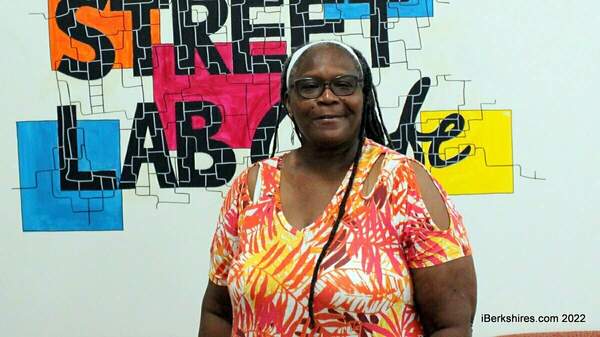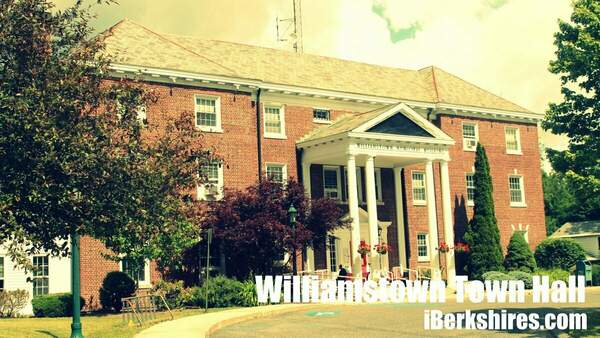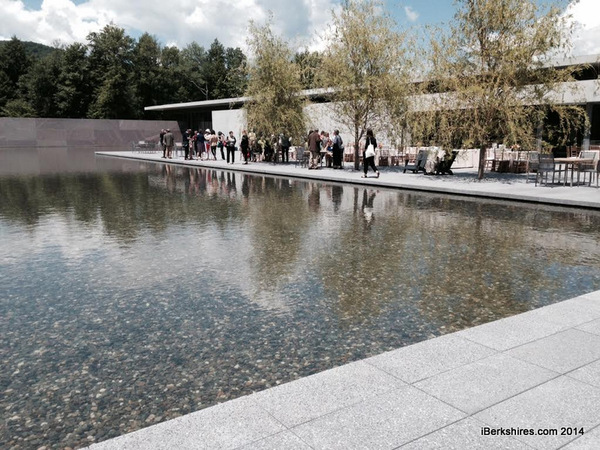
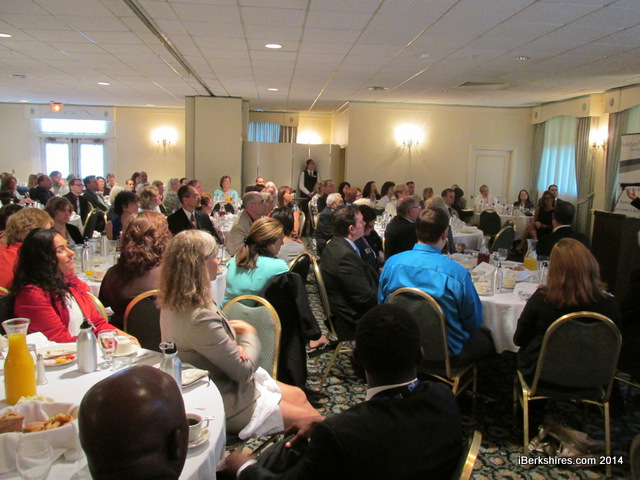
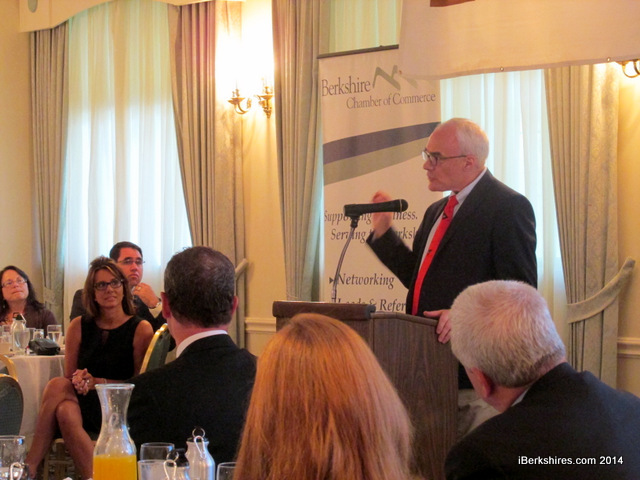
Region Already Feeling Impact of Clark Art Reopening
 Professor Stephen Sheppard speaks Wednesday about the potential economic impact of the Clark Art at a Berkshire Chamber of Commerce breakfast in Williamstown. Professor Stephen Sheppard speaks Wednesday about the potential economic impact of the Clark Art at a Berkshire Chamber of Commerce breakfast in Williamstown. |
WILLIAMSTOWN, Mass. — The economic dividends on the region of the Clark Art Institute's $145 million expansion has been postulated for months, if not years, before its grand reopening in July.
The numbers are just beginning to come in for what's being proclaimed as the "Bilbao of the Berkshires."
On Wednesday morning, Berkshire Chamber of Commerce members got an update on the economic potential of the Clark — and other "interesting things that are going on in the local economy" — from economics professor Stephen Sheppard, director of Williams College's Center for Creative Community Development.
"The real star of the cultural landscape here in the Berkshires has been the reopening of the Clark Art Institute and its new Tadao Ando wing," Sheppard told the sold-out gathering at the Williams Inn. The Clark and its fellow cultural venues are "a major part of why people come to the Berkshires." And waiting in the wings is the $25 million expansion of Massachusetts Museum of Contemporary Art.
While the Berkshires should be skeptical of the "enthusiastic rhetoric" comparing the Clark to the Guggenheim Museum in Bilbao, Spain, and how its combination of world-class collections and outstanding architecture spurred economic growth there over the past two decades, there are early indications the museum is attracting significantly more traffic to the region, he said.
Since opening on July 4, the Clark has welcomed more than 63,600 visitors and is on track to see between 225,000 and 230,000 through the end of June 2015, or about 30,000 more people.
"This is way above the last summer that it was open, even comparing to the peak summer of 2010 when the Clark had hosted its wonderful 'Picasso Looks at Degas' exhibition," Sheppard said. "That's really great to improve over previous peak performance by 19.5 percent; it's a real accomplishment."
Those extra people are buying food and merchandise, staying at hotels, and possibly considering moving here.
Breakfast emcee Bruce Finn of Main Street Hospitality Group, the new managers of the Williams Inn, confirmed the Clark has had an impact on business this year already.
"Occupancies in North County were up 14 percent over the previous year for the month of July. That's all the hotels put together in Northern Berkshire County," he said. "In August, all indications are for a similar increase."
These 30,000 new visitors will have an estimated $3 million impact on economic output this year, according to the Berkshire economy model developed by 3CD, two-thirds of it through food service and retail, and create 32 new jobs.
"If you look at the total economic impact on Berkshire County alone, the presence of the Clark and the economic activity of the Clark will generate about $54 million a year in added economic input in the region," said Sheppard.
That translates to the support of 443 jobs across economic sectors, from health care to hospitality to agriculture to manufacturing.
"I don't now if you want to call it the 'Bilbao effect'... but whatever you call it, it has to be regarded as a very welcome positive entry in the county's income segment," he said.
About half the work force in the Berkshires are involved in health care, retail, hospitality and manufacturing, broad sectors of employment in most regions.
What's unusual, said Sheppard, is the number of people involved certain areas compared to the county's population. Educational services employs 2 1/2 times the expected work force; arts education and recreation sectors are double.
"This is an economy that knows how to produce educational services, it's something we do well, it's a world class product we produce here and people are coming to the county to consume it," he said. "If we measure cultural production by the expenditures of the cultural organization within the county and look at the sum per capita ... Berkshire County ranks second in the United States amongst all the metropolitan area.
"Berkshire County is a national mirror in terms of cultural production."
The other sectors are highly dependent on culture and education: Health care services employs 50 percent more people than would be expected for the region's 130,000 population; hospitality 25 percent and retail trade about 24.
"When we bring people to Berkshire County to experience this education, arts, culture and recreation that we have to offer, we should celebrate it because we have a world class product that we can be proud of," Sheppard said. "The real challenge we face as a business community, as an overall community in Berkshire County, is to figure out how to facilitate and encourage development of these economic sectors so they continue to grow and thrive in the region and, furthermore, to leverage their success to benefit a wider group of residents and other economic sectors."
The county needs to recognize that the various sectors need to be integrated to benefit each other, he said, using his favorite story of how artist Eric Rudd came to the Berkshires to speak with what was then GE Plastics about materials useful in his creations and ended up buying mills and buildings to develop.
Transportation and accommodations are two elements that he believes have to be considered, such as the development of passenger rail. While still years away, local leaders need to start thinking now of how passengers will get to destinations once disembarking.
"I think all of us in our communities need to work together," he said. "So we can make visiting the Berkshires as easy and affordable as possible. We need to turn every day trip into an overnight stay."
The breakfast was sponsored by MountainOne. Good News Salutes were given to chamber members:
• Mad Macs of Pittsfield and Williamstown, which plans to open another location in Great Barrington. The Apple service provider has been in business for 15 years.
• Berkshire Family and Individual Resources for celebrating its 20th anniversary. The nonprofit provides outreach, educational and living assistance for challenged individuals and their families.
• Elder Services of Berkshire County, for its 40th anniversary. Beginning as Berkshire Home Care, it has been providing home services to help and support elders within the community.
Tags: Berkshire Chamber of Commerce, breakfast, Clark Art, creative economy, cultural economy, Education,





